
If you're looking for a fresh set of higher-end technical ice tools, two much-discussed models new this season are bound to turn your head. Enter the Black Diamond Hydra - a highly refined and versatile tool - and the DMM Cortex - a strikingly burly yet lightweight workhorse. Both seem destined to become familiar sights on winter crags in the coming seasons, but which is the axe for you? We put them to the test this winter to see how they stack up for UK climbers.
We evaluated these axes based on how well they suit Scottish winter climbing, where mixed terrain, including ice on rock, turfy ledges, and torquing in cracks, is common. Our focus was on their general feel and swing, weight and balance, handle and shaft design, picks and feature set, and overall value for money.
Appearances can be deceiving. At first, the Cortex seems like the more aggressive tool. However, when hanging them side by side, both the Hydra and Cortex display almost identical levels of aggression. The main distinction lies in the design: the Cortex has a more curved shaft, while the Hydra features a more downturned pick.
DMM Cortex - £375
The Cortex stands out with its striking exoskeleton I-Beam design, CNC-machined from a single aluminum billet. This construction puts strength and durability front and centre, yet the tool remains impressively lightweight. It feels purpose-built for the demands of burly Scottish winter climbing. While many manufacturers are refining and fine-tuning existing and often similar ice tool designs, DMM has taken a bold step in a different direction. The result? A tool so robust and confidence-inspiring that, for many climbers, it could be the only one they ever need.
Weight and Balance
At 585g/620g (with/without pick weights respectively), the Cortex is slightly heavier than the Hydra but still holds its own in the wider market, and is worlds away from DMM's heavy old battle axe the Switch. And as you can probably tell, while usefully light it does not feel at all insubstantial.
The Cortex manages that rare blend of impressively low weight with an exceptionally durability; this is a fully 'Type 2' (T-rated) tool. Without the pick weights it feels neutral in hand, making it predictable, stable and easy to manoeuvre on technical mixed terrain. With pick weights fitted the balance shifts nicely towards the head for a good 'flick' at the end of the swing and bite into ice. We'd say for that for pure ice climbing the Cortex isn't quite as refined in its balance as the Hydra, but this is subtle and ergonomics in general will also depend on individual style and hand size/shape.
Handle and Shaft
The standout feature of the Cortex is undoubtedly its CNC-machined shaft. While not entirely groundbreaking—similar designs have appeared in models like the Kailas Entheos and Forecast Equipment Nor*easter —it remains a rarity in modern ice tool design. Recently, most major manufacturers have gravitated toward a more familiar design, as seen in the Hydra and Petzl Nomic. The Cortex bucks this trend, though its construction comes at a hefty price. That said, with a shaft this robust (you'll not be seeing any head wobble emerge over time), it's a tool that could outlast many of its competitors, making it a worthwhile long-term investment.
The shaft's steady yet aggressive curve excels on steep ground, offering ample clearance over bulges and a natural arc for hooking flakes. This curve also improves daggering on snow slopes at the top of routes, keeping gloves drier and hands warmer. However, this aggressive shaft curve makes it more awkward than the Hydra for hammering in protection like bulldogs and hexes.
The Cortex's slightly tapered shaft provides a subtle advantage in Scottish winter climbing, occasionally allowing it to 'nut' into constrictions in cracks—similar (although less pronounced) to the Black Diamond Fusion or Fuel. The narrow taper compared to these designs makes it easier to slot into deep cracks (which I was thankful for when testing side by side with a Fuel on a pitch when hooking a key chockstone).
The well-dropped handle helps sit on hooks nicely and retain warmth on ice or buried mixed routes, keeping the hands away from snow and ice. Unlike some tools with adjustable grips, the Cortex takes a one-size-fits-most approach. It fits my average-sized hands well, but those with smaller hands may find the index finger rest less ergonomic—my partner, for example, found it less comfortable. The back of the handle where my thumb rests in the first grip position is also quite pronounced, which I personally find less comfortable than the refined smoother curve of the Hydra. The upper grip is well-sized and supportive, allowing for secure matching and controlled hand switches. The rubberized coating feels durable and helps insulate against the cold.
Picks and Features
The Cortex comes supplied with DMM's Ice-Tech pick, a T-rated option well-suited to UK winter climbing, excelling when requiring to sit on deep hooks and when torquing on mixed and varied ground. A notable cauliflower spike on this pick improves hooking on flakes and other features. The tool is also compatible with DMM's full range of technical picks—Ice, Ice-Tech, and Dry—offering versatility across different climbing styles.
The handle accommodates a leash clip-in point (the Hydra's does not) and includes a bottom hole that can be threaded with ~4mm cord for additional security. A few small serrations in the bottom of the shaft provide a bit of grip when plunging, although this design does not offer the full security of a spike when walking on steep snow or icy slopes.
DMM's modular system means the Cortex shares compatibility with Apex and Vertex ice tools, allowing the use of interchangeable hammers, micro hammers, compact adzes, and picks. The micro hammer comes as standard. The hole in the head allows for standard clipping to gates or ice screw clippers for easy carrying on a harness.
Black Diamond Hydra - £265
The Hydra is a finely tuned and highly versatile ice tool, designed with a refined balance that offers precision in its swing and adaptability across users and climbing styles. Its carefully considered features and broad range of pick compatibility allow it to excel in a variety of disciplines, from steep ice and mixed terrain to dry tooling and demanding alpine objectives. But how does the Hydra's more conventional but lightweight design compare to the Cortex in a UK context?
Weight and Balance
Weighing 542g/614g (light and heavy head weight respectively), the Hydra is the lighter of the two tools on test and very light for a technical ice tool in general. Where it truly excels is in its exceptional balance and swing. Those who appreciate the weight and balance of the Petzl Nomic may find the Hydra similar in feel. With the heavy head weights a much more powerful end to my swing is easy; it's impressive how much of a difference in weight these add (~70g!) without impacting the balance of the tool. Swapping out for the lighter head weights, the Hydra becomes more nimble for mixed climbing, and feels terrifically light in the hand to avoid any unwanted fatigue across the course of the day. The positioning of these weights on the head itself and not further down on the pick seems to me to make a great difference for a really nice centre of balance when you hold the Hydra: it's difficult to describe but you may understand once you pick one up. Overall, while both tools are well-balanced, the Hydra offers a slightly more refined balance and swing, especially on ice, although for burly Scottish Winter climbing the all-out robustness of the Cortex is not matched here.
Handle and Shaft
The Hydra's hydroformed aluminium shaft features a more distinct bend compared to the Cortex's gradual curve, similar again to the design of a Nomic. This provides clearance for steeper terrain and hooking across bulging features, and the less progressive curve in the shaft means that when it comes to hammering gear in/out it performs a fair bit better than the Cortex.
The handle offers a natural grip that will suit a wide range of hand sizes easily. Unlike some models with fixed dimensions, the Hydra benefits from an adjustable grip rest, allowing for a more customized fit depending on hand size. The smaller index finger rest may appeal to a wider range of users. As mentioned, I slightly prefer the back of the handle here when swinging and resting my thumb in first position, although like everything, this will depend on hand ergonomics and swing style. The rubber coating provides a secure hold, even in wet conditions, and there's a nice consistent dimension to the shaft in both the first and second positions.
Picks and Features
From a UK perspective the Hydra is supplied as standard with an ice pick and not BD's mixed pick which will be more appropriate (and indeed safer) for those climbing in the UK where you'll want to be relying on a greater amount strength when torquing and for bite from the top comb when using stein pulls, which the mixed pick offers but the ice pick does not. Add a further £55 per mixed pick for the Hydra and the cost savings compared to the top end price tag of the Cortex do not look quite so obvious.
All of BD's Hydra-compatible picks are treated with a specific heat treating process that ensures they are pretty tough, although only the mixed and dry picks are T-rated. The ice pick is noticeably thin at the end, great for penetrating water ice, but less confidence inspiring if you wanted to take it on mixed ground. In general however, the pick design on the Hydra appears more refined than those on the Cortex, with a nice sharp edge on the top of the ice pick and a well-considered curve which allows for easier cleaning of the pick out of placements when climbing.
For a very clean and polished tool, the Hydra offers a good feature set and its careful design consideration makes it really stand out in the market. The handle's spacer system works incredibly well to add extra length to the handle for those with larger hands. I have found one spacer works well for me with the gloves I usually climb in.
An alpine spike and a micro spike (supplied) can both be attached at the bottom of the handle, and these work slightly better than the spike-less handle of the Cortex for biting on snow slopes: the alpine spike is the one you'll want if you're out on this sort of terrain a lot. UK climbers will also most likely need to attach some cord (~4mm works here) if using leashes, while the Cortex in contrast is easy to clip directly into the bottom of the handle itself.
A micro hammer (supplied) and an alpine hammer give you more options for different climbing disciplines, including into more alpine environments with the additional of a small adze (not available until Autumn 2025).
Verdict
So which one should you buy? It's genuinely hard to put forward a clear 'winner' here, since both tools are exceptional at what they offer, and each offers something slightly different.
The Hydra is a lightweight, well refined and versatile tool that has a brilliant feel when swinging, and definitely has the edge for pure ice climbing. Its feature set and adaptable handle will appeal to a wide range of users, and apply in a variety of environments and disciplines.
The Cortex is very clearly a burly Scottish mixed climbing beast, able to take all the punishment you can dish out. But it's not unsubtle, since it feels great to use and benefits from a nice balance and exceptional clearance for hooking on featured terrain and turfy ledges. It clocks in right at the top for durability, but also for price - and this may put some potential buyers off.
However, for Scottish winter climbing the Hydra owner is going to need to invest in an additional set of mixed picks at a considerable cost, and this will narrow the price difference between the two models.
When it comes to making your call, the ergonomics and feel of each axe may clinch the deal, and this is a personal judgement. Only you will know which feels better in your hand, so our best advice is to get down to a shop that stocks both to have a go for yourself.


























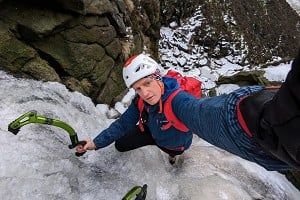

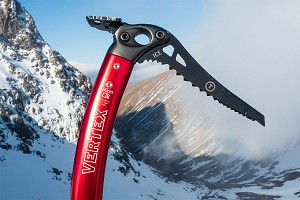
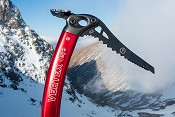


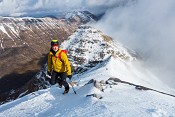
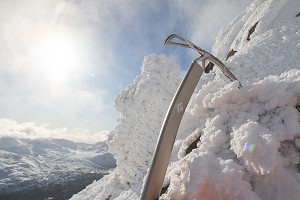
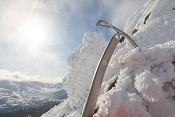
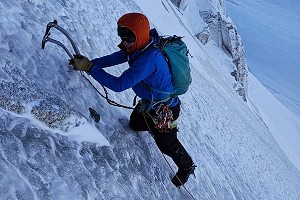
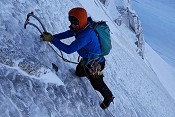


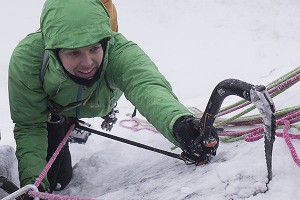

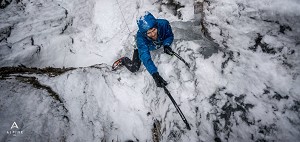



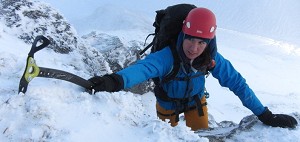

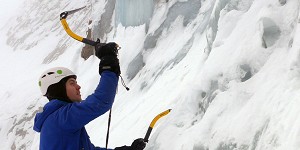


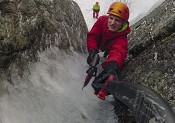
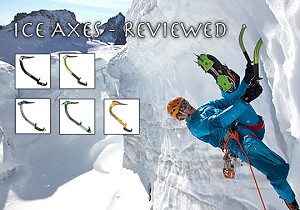
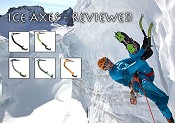
Comments
Damn, these were the two I narrowed down to about a month ago. Happy with the Cortexes (cortices?).
There's not much in the price by the time you've bought the spikes and tech picks for the Hydras, Cortexes came with two extra picks from Needlesports as well.
Yes, happy with the Cortex/Cortices (also not sure on the plural haha).
Both Cortex and Hydra are great. I think it'll depend on what you want to primarily use each for and some preferences on the ergonomics. I think you can get away without the spike on the Hydra in Scotland. Although, I think (particularly nowadays) in Scotland you'll almost certainly want those I.C.E. Mixed picks on the Hydra.
Glad to see a little nod to the Entheos in there, an absolutely phenomenal tool. If it wasn't a unicorn requiring a remortgage of the house and readily available in Europe, it would almost certainly become the de-facto Scottish mixed tool. But a company like DMM going down the CNC route makes sense given their history with super solid tools like the hot-forged Rebel and Anarchist. I would love to see a CNC alpine axe for no other reason than I imagine it would just look dead cool. Also, the Cortex needs to be made readily available in the grey version... Red just isn't my thing. What's interesting is that Forecast Equipment has shown that a small team with a CNC machine, basic autocad skills and some aluminum billets can make a pretty solid mixed climbing contender. I actually foresee the potential for near custom designed (or even 3D scan of other popular tools) CNC axes with a head bolt pattern to fit picks from your brand of choice.
I've never actually tried the Entheos. A shame that it's hard to come by in the UK as I can see a lot of people having use for them here. I hadn't actually noticed the Cortex comes in grey, but see it's more for tactical applications. That's some piece of kit to be supplied with!
Not a specific question for John, but are there actually ANY genuine conceivable "tactical situations" where such an ice tool could possibly be used where it being camouflaged (and in grey too?!) would be important? I understand that adventure training has is purpose in the military, but a red tool as used by the civvies would be fine for that. Has anyone, anywhere ever used a technical ice tool in a environment where combat has or could take place?